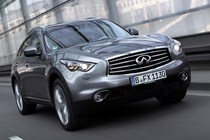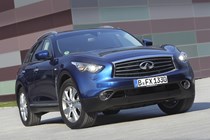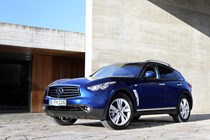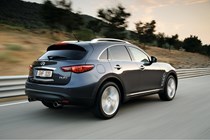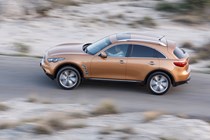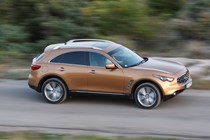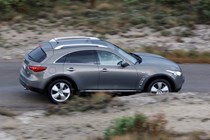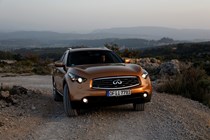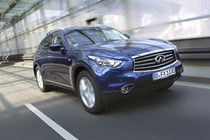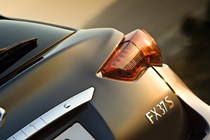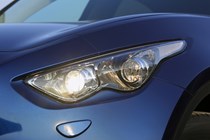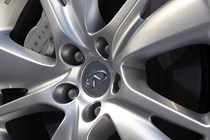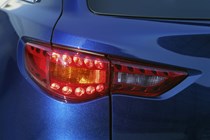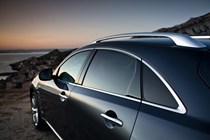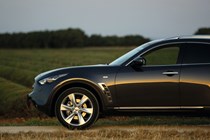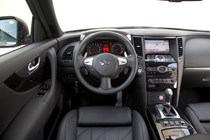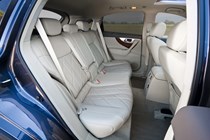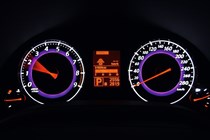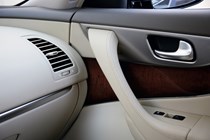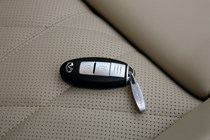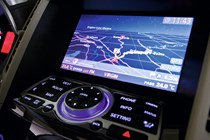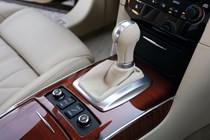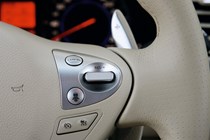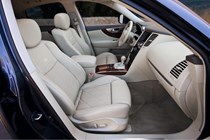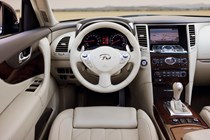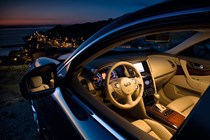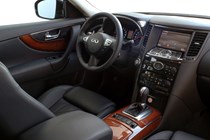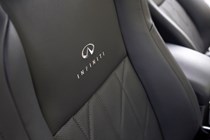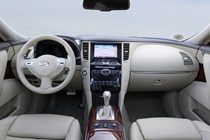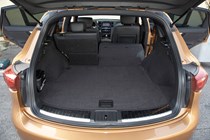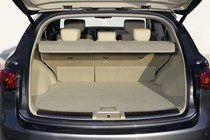
Infiniti FX Estate (2009-2018) engines, drive and performance
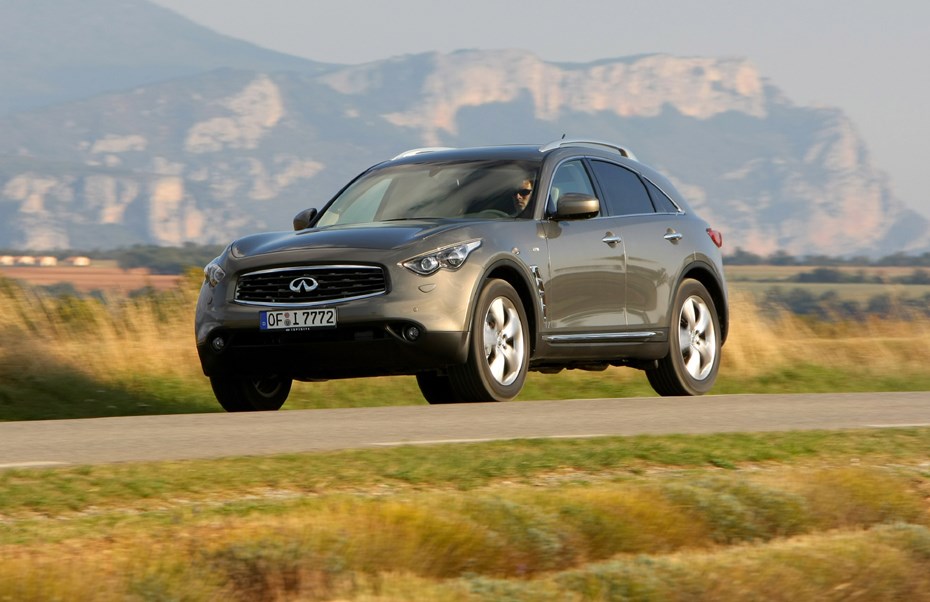
The petrol purists can choose between a 3.7-litre V6 engine in the FX37, or a 5.0-litre V8 engine in the FX50, which is the best model for Infiniti FX performance. Both units are potent and allow rapid progress. The FX50 is exceptionally quick, with 0-62mph achieved in 5.8 seconds. It’s bettered by BMW’s turbocharged X6 XDrive 50i over the benchmark, but is comfortably quicker than the equivalent Porsche Cayenne or Range Rover Sport. The V8 sounds like it’s from a sports car while with 385bhp and huge amounts of low-down pulling power it performs more like a sports coupe than a 4x4. The 3.7-litre V6 is smooth and boasts 315bhp, meaning the FX is still brisk. It manages 0-62mph in 6.8 seconds and is capable of 145mph flat out. The 3.7 is keener in the top end of the rev range than the V8 simply because the FX50 is so muscular that you don’t need to keep your foot planted to the red line. Both engines come with a smooth-shifting seven-speed automatic gearbox as standard, with a manual mode available through steering wheel-mounted paddle shifts. A limited edition version of the V8 model called the FX Vettel has 414bhp and 0-62mph in 5.6 seconds.
Diesel engines
The 3.0-litre V6 diesel version is the practical alternative but it is a rather unrefined beast. When pushed it’s way too noisy and although it’ll give you a healthy shove in the back low down in the rev range it’s not a smooth power delivery. It’s pretty quick though: 0-60mph takes 8.3 seconds and it has a top speed of 132mph.
Parkers recommends
While the brawn of the petrol engines satisfies keen drivers, most will prefer the economy, if not the emissions, of the diesel and this is the FX we’d opt for.
The FX feels far more nimble than a car of this size should, with sharp responses thanks to very direct steering and a strong resistance to leaning when cornering. The steering is quite heavy on the move but is easier on the wrists when travelling at low speeds. The FX50 also comes with Rear Active Steer, which can turn the rear wheels to improve agility and stability.
At lower speeds they turn in the opposite direction to the front wheels to make the car more nimble, and at higher speeds turn in the same direction as the front wheels for better precision. The four-wheel drive system can vary power distribution between the front and rear wheels, from 50:50 for maximum traction, to 100% to the rear axle when the car is running steadily in dry conditions.
Several body panels use lightweight materials – the doors are aluminium and the tailgate is plastic, while many suspension components are also aluminium, helping the FX feel responsive.


